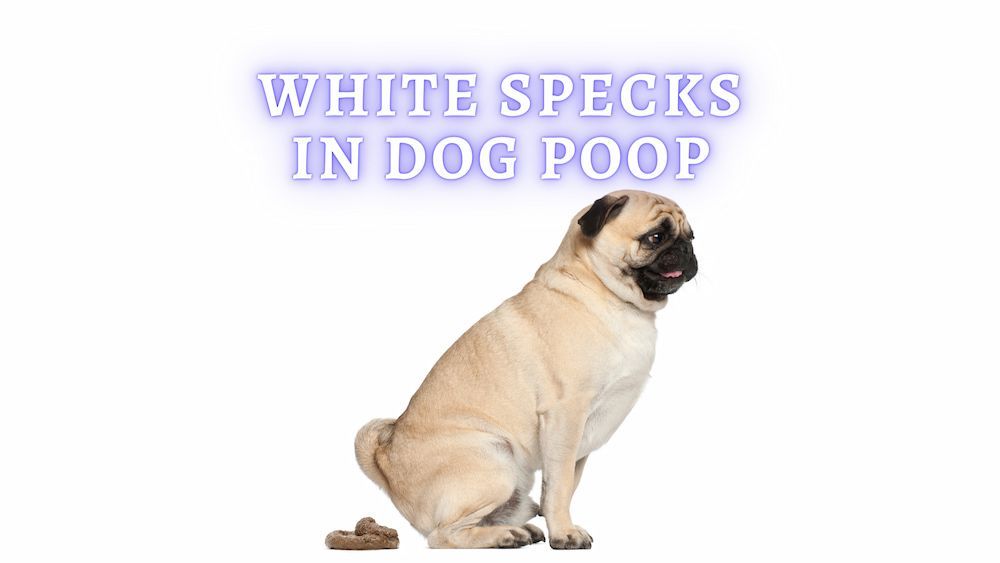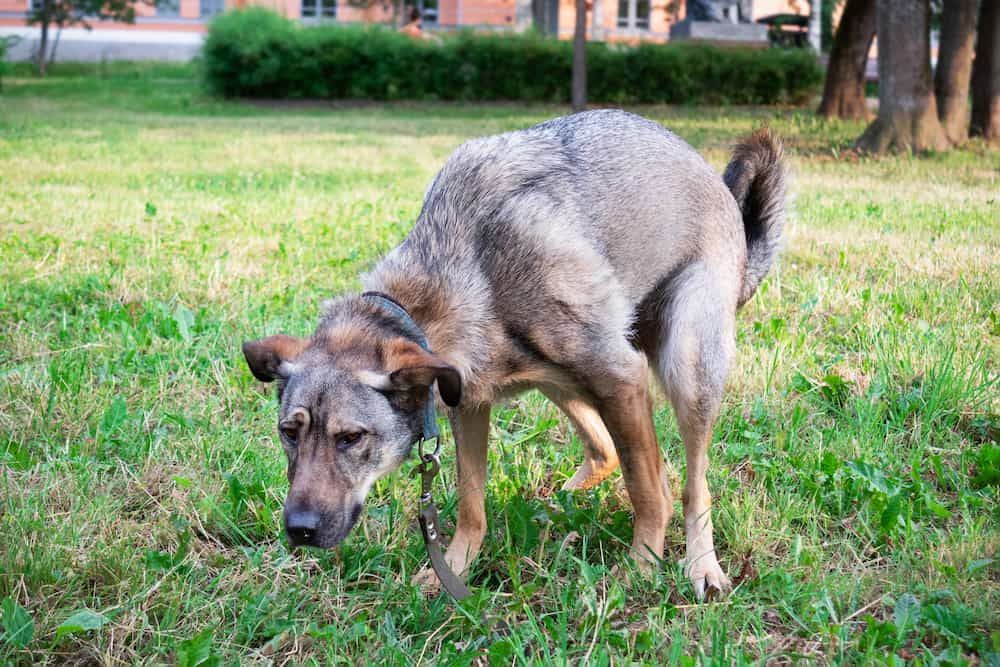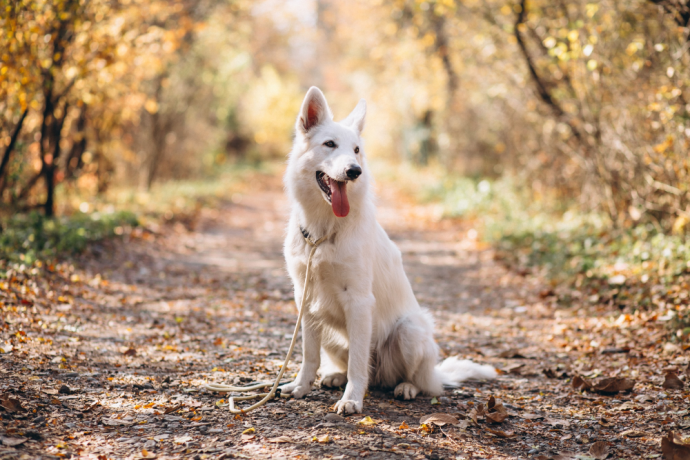White Specks In Dog Poop: What Are The Little White Specks In Dog Poop? (Vet Advice)
Written by:
Author: Dr. Linda Simon
Dr. Linda Simon is a veterinary surgeon working with seven years of experience. She is a fellow of the British Veterinary Association and specializing in animal medicine. Also, she has been the Woman magazine resident vet for the past two years and writes a regular column for them, focusing on pets and their health.
View all 30 articlesLearn about our editorial process and veterinary review board.
Viewed: 659
Updated on: 04/06/2022
While it may seem strange to analyze your dog’s poop, this is actually a really important thing to be regularly doing. It can be a good indicator of their overall health.
Any changes in dog poop is worth noting and could be the first sign of an issue with your dog’s health.
If you see white specks in your dog’s poop you’ll be wondering what is going on. There are a range of things that these white specks could be and this article discusses the possible causes in great detail.
What are little white specks in dog poop?
White specks in poop that are visible to the naked eye could be a wide range of things including undigested food remnants, evidence of a parasitic burden, fly eggs, or even foreign matter.
You may need to put on your detective’s hat to get to the bottom of things. It is sensible to have a closer look at the white dots in the dog poop, to determine what they look like close up and whether or not they are moving.
Taking a photo is a wise idea if you are not planning on storing the stool and want your vet to take a look at a later date.
If you do want to bring the stool into the clinic for analysis, it is a good idea to take three separate samples over three days; giving a broad representation of what is going on within your dog’s intestines.
What if you see white specks in a dog’s poop that are not moving?
If your dog’s feces suddenly has sesame seed-like specks in it you may be scratching your head. What exactly is going on here?
If your dog frequently passes poorly digested food, this is worth mentioning to a vet as it can be a sign of a digestive disorder. It is also seen in cases of food intolerance and over-feeding.
Dr. Linda Simon
- Non moving white flecks in a stool sample may well be diet-related. Perhaps your pup has recently chowed down on some white rice or white seeds like hemp, a white chew or raw hide, or a bone. While a dog’s digestive tract is excellent at breaking down food, sometimes small pieces of food will remain intact.
- If the dog poop is not fresh and has been laying outdoors, there is every chance the white specks are fly eggs or larvae. This is especially true if the weather has been warm as flies will start laying eggs shortly after the stool has passed.
- Is your pup on a new medicine or supplement? It is quite possible that the capsule or tablet has not been broken down fully.
- Indigestible material such as plastic or stuffing from a toy may be passed in small parts if it was thoroughly chewed before being swallowed. Puppies and dogs eat all manners of things they shouldn’t!
What If The White Specks in the Dog Poop Are Moving?
If you are confident the tiny white dots are moving, we can be fairly happy we are dealing with intestinal parasites.
Tapeworm
Tapeworm segments can move and they are small like grains of rice. They can be seen on the fur around the dog’s anus or within the fresh sample of the stool itself.
Roundworm
Roundworms are more like spaghetti than specks but it can sometimes be tricky to get a good look at things, especially if the stool is loose or it is a dark evening. Again, these nasty little critters can be visibly moving.
Hookworm
Hookworms are only about 2-3mm long, so they are hard to see; however, they may show up as white specks in poop, especially in high numbers.
How can I tell if my dog has tapeworms?
Tapeworms are not uncommon and can cause a range of signs in our canine friend, including:
- Dull and brittle coat.
- Vomiting and diarrhea.
- An increased appetite.
- Bum scooting (though the more common cause for this would be blocked anal glands).
- Visible tapeworm segments in the stool or near the rear end.
Other symptoms such as dehydration and lethargy are seen less often.
The most common reason a dog develops a tapeworm infestation is that they have fleas.
Fleas and the tapeworm
The adult flea is a host for these worms, and they can be transmitted even when there are not many fleas present. The dog swallows the infected flea containing the larva and the adult worms than grow within the intestinal tract.
Tapeworm Prevention
The best way to prevent tapeworms is to keep your pup up to date with good quality flea and worm prevention. Fleas are present all year round and are especially rife in multi-pet households, particularly those where cats are present.
Though not a worm we tend to worry too much about human health; there have been documented cases of children developing a tapeworm infection from dogs. [1]
READ MORE: How Often to Deworm a Puppy?
Hookworms
Hookworm infestations tend to cause more issues in small puppies, which can become very unwell from a heavy burden. Signs of hookworm include:
- Bloody diarrhea.
- Frequent and irregular bowel movements.
- Pale gums.
- Lethargy.
- Weight loss.
- Failure to thrive.
Hookworm Transmission and Prevention
There are a range of ways a pet can become infected, including via their mother’s milk and through the placenta while still inside the uterus. These worms can also be passed on orally and through the skin.
One of the best ways to prevent hookworms is to ensure the mother is wormed throughout her pregnancy with a safe deworming treatment such as Fenbendazole. [3]
Puppies should be wormed every two weeks until 12 weeks of age. Ensure their environment is clean and that any stool is swiftly cleaned away.
As human children can become infected [2], it is very important for owners to be ‘hot on hygiene’ and to emphasize the importance of handwashing after handling puppies and dogs.
READ MORE: Best Artificial Grass for Dog Potty
Roundworms
Roundworms are also known as nematodes and they are a common canine parasite. In fact, many dogs have a roundworm infestation but show little to no signs and their owner never knows.
For those who have a heavy burden and clinical signs, we may notice:
- Diarrhea and vomiting.
- Weight loss or failure to gain weight appropriately.
- A dull coat.
- A potbelly.
- A cough.
- Visible white worms in the stool.
Roundworm Transmission and Prevention
These worms are contracted in a number of ways, including from licking or sniffing at another dog’s poo, by eating an infected animal (e.g. a bird or rodent), or from the mother through her milk or in utero.
The best way to prevent these nasty worms is to keep your pets up to date with a good quality wormer. This is especially important in the pregnant and nursing female and the puppy.
Some worming treatments are not approved for use early in life or during gestation or lactation, so always double-check the product you are using with your pet first.
Try hard to prevent your pup from hunting wild animals and vermin, as they are a typical host of roundworms. This may mean keeping your dog on a leash in certain areas and dealing with any rat or mouse infestation within your yard.
What Dog Poop Can Tell You About Your Dog’s Health?
Many dog lovers will stick their nose up at the idea of examining their dogs’ poo, but it can offer a real insight into their intestinal (and overall) health.
The poop should be light brown and easy to pick up with a poop bag. It should be soft enough to yield when pressed but should not leave any trace on the ground.
We are looking for changes in color or consistency, foreign material, blood, mucus, worms, or moving white specks. Remember, some worms and all parasite eggs will not be visible to the naked eye.
If you notice movement in your furry friend’s stool, this is definitely causing for concern and not something to be ignored.
Similarly, bloody diarrhea is a red flag. Both of these signs can indicate dangerous parasites.
A vet can easily perform a stool analysis, assessing your dog’s stool sample and checking for any bacteria or parasites. This along with other investigations such as a blood test and abdominal scan are often advised when a dog is unwell.
Watch your puppy’s and dog’s poop closely, ensuring you pick up on any sudden changes so they can be discussed with their veterinarian promptly.
Many dog owners feel embarrassed at discussing their dog’s poop but this is something vets will be very well versed in!
Dog Poop and It’s Color
The normal dog’s poop will be tan brown. A one-off color change is not always a red flag but should be taken heed off.
The stool may have a slightly green tinge if your pup has been eating too much grass. Grass eating can be seen with excess bile production, stomach ache, nausea, and boredom.
Dog poops that are pasty and pale may be a sign of serious liver or gallbladder disease or could indicate a dog’s diet that is too high in calcium.
(Some owners may think it is a good idea to supplement their pooch with calcium, but this should only ever be done under the guidance of a vet. Providing excess calcium can negatively affect their health).
Black or tarry stool usually tells us that there has been some bleeding higher up in the dog’s intestine or stomach, perhaps caused by an infection, parasites or an ulcer.
Bright red stool indicates bleeding in the lower gut or could be a sign of a rectal polyp, tumor or anal gland disease.
Tell your vet right away if your dog’s poop has changed in appearance.
READ MORE: Why Do Dogs Eat Grass?
FAQ
Why are there tiny white specks in my dog’s stool?
If you have noticed tiny white specks in the dog poop you’ve been pooping and scooping you may be worried for your furry friend. Fear not, there is often a reasonable and straightforward explanation.
We may be talking about something as simple as your dog having eaten dog food that contains rice or bone fragments.
It could also be that the white specks are fly larvae; laid after the stool was passed. Fly larvae tend to hatch within a day or so.
Finally, you could be seeing evidence of an intestinal parasite, something that is usually easy to deal with, especially if your dog is otherwise well.
Why does my dog’s poop look like it has seeds in it?
Dog poop that contains white specks like sesame seeds can be normal. It is quite possible that the dog food had seeds or similar-looking foods in it.
If you’ve been sharing human food like your sesame snaps, quinoa or white rice, then your explanation is!
Other causes for white dots in dog stool include parasites, foreign material (such as white plastic), or a new medication your dog has been put on.
What do worm eggs look like in dog poop?
The most common worms we see in dog poop include roundworms, tapeworms, hookworms and whipworms.
We may be able to see the more significant tapeworms segments on our dog’s anus or in their stool, and these will look like undigested rice grains.
Roundworms can be seen in a dog’s poop with ease and look like spaghetti (that may be moving!).
Hookworms are tiny but can be detected if we look very closely.
Whipworms are not usually seen and so won’t typically present as tiny white specks in your dog’s poop (unlike some of the other parasites mentioned).
Can my dog’s worms be passed to other animals or people?
Yes, your dog’s parasite burden can be passed on to other animal hosts including humans. This is why it is so important to clean your dog’s poop away quickly, exercise good hand hygiene, and ensure your dog is updated with their parasite prevention all year round.
If you are concerned, you may have caught worms from your dog, talk to a vet right away.
Article Sources:
- “Two Cases of Dipylidiasis (Dog Tapeworm Infection) in Children: Update on an Old Problem.” American Academy of Pediatrics, 1 July 1983, publications.aap.org/pediatrics/article-abstract/72/1/114/74982/Two-Cases-of-Dipylidiasis-Dog-Tapeworm-Infection.
- D.Bowman1, Dwight. “Hookworms of Dogs and Cats as Agents of Cutaneous Larva Migrans.” Science Direct, sciencedirect.com/science/article/abs/pii/S1471492210000176.
- Brooks, Wendy. “Fenbendazole (Panacur).” Veterinary Partner, veterinarypartner.vin.com/default.aspx?pid=19239&id=4952015.
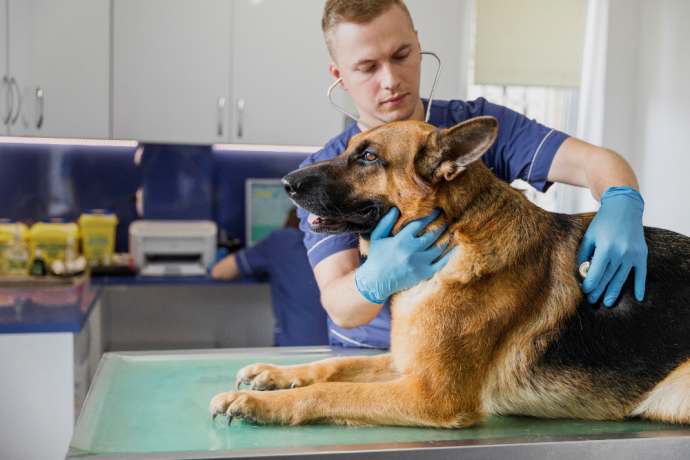 Dog Veterinary Tips Dog Neutering: Pros and Cons of Neutering a Male Dog (Vet Advice)
Dog Veterinary Tips Dog Neutering: Pros and Cons of Neutering a Male Dog (Vet Advice) - 8072
- 9
 Dog Veterinary Tips Why is my Dog throwing up: Causes and Preventing (Veterinary Advice)
Dog Veterinary Tips Why is my Dog throwing up: Causes and Preventing (Veterinary Advice) - 23424
- 5
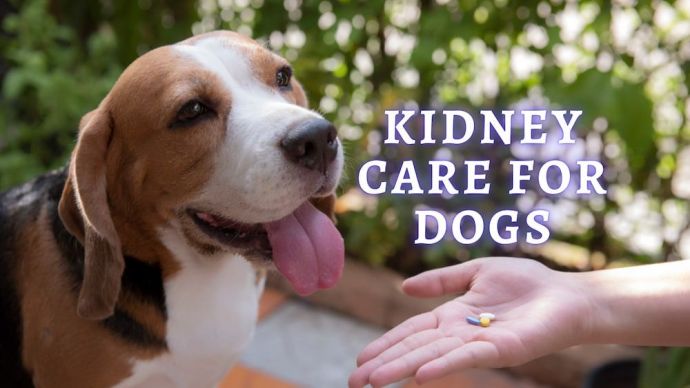 Dog Veterinary Tips Kidney Care for Dogs: How to Improve Kidney Function in Dogs? (Vet Advice)
Dog Veterinary Tips Kidney Care for Dogs: How to Improve Kidney Function in Dogs? (Vet Advice) - 754
- 0
 Dog Veterinary Tips Why is my Dog throwing up: Causes and Preventing (Veterinary Advice)
Dog Veterinary Tips Why is my Dog throwing up: Causes and Preventing (Veterinary Advice) - 23424
- 5
 Dog Care Why Is My Dog Bleeding From Its Butt? Causes and treatment of rectal bleeding in the dog
Dog Care Why Is My Dog Bleeding From Its Butt? Causes and treatment of rectal bleeding in the dog - 22074
- 0
 Dog Care My Dog Keeps Scratching His Mouth: Reasons Why Your Dog Scratching Face
Dog Care My Dog Keeps Scratching His Mouth: Reasons Why Your Dog Scratching Face - 17560
- 1









